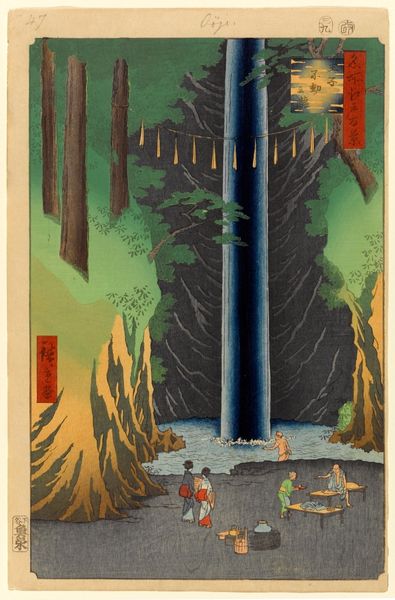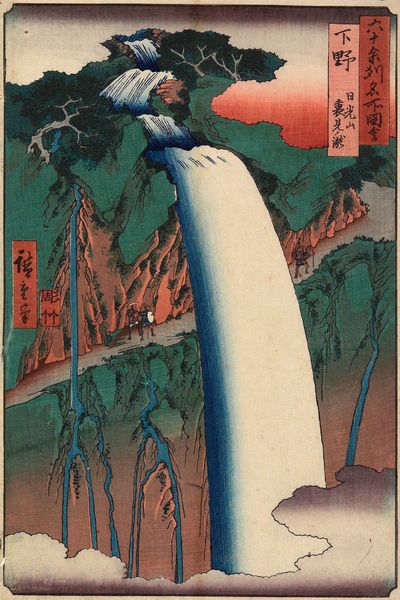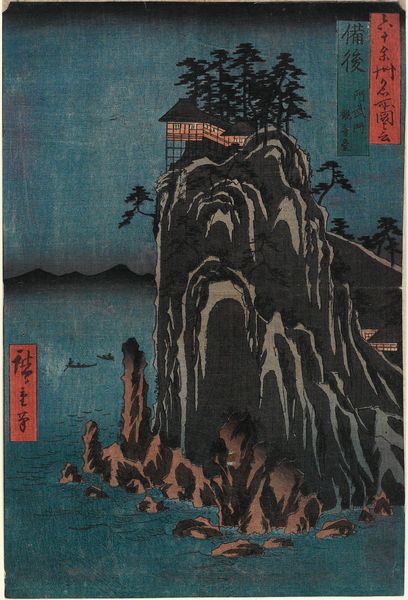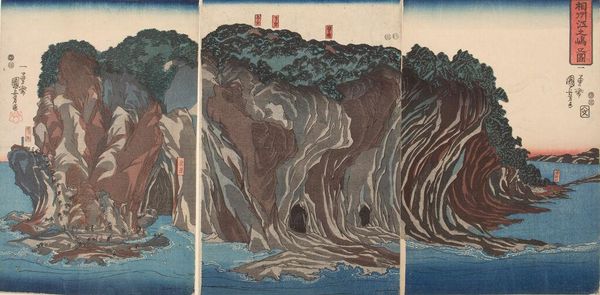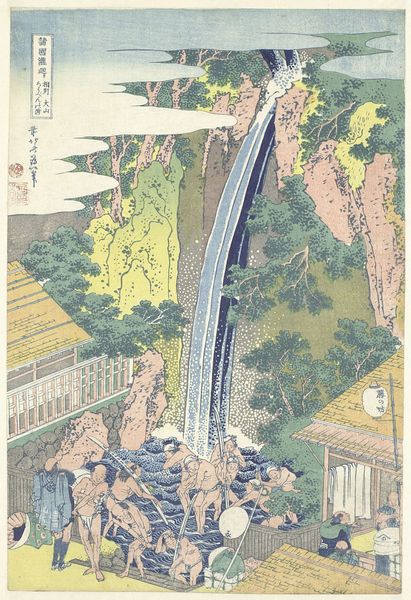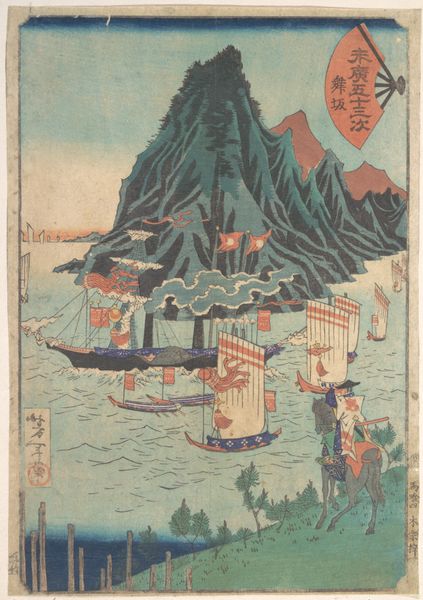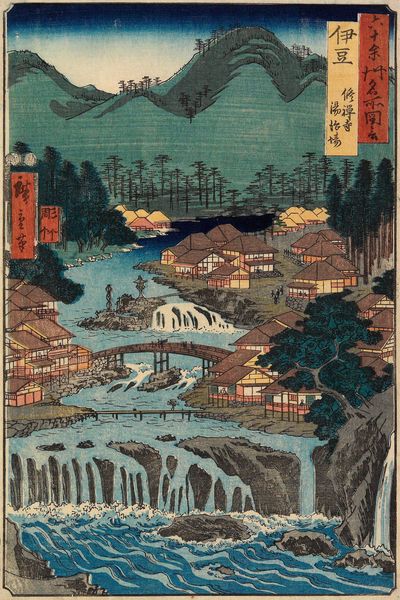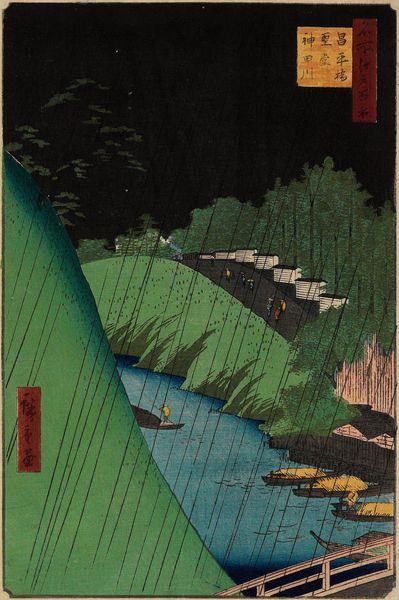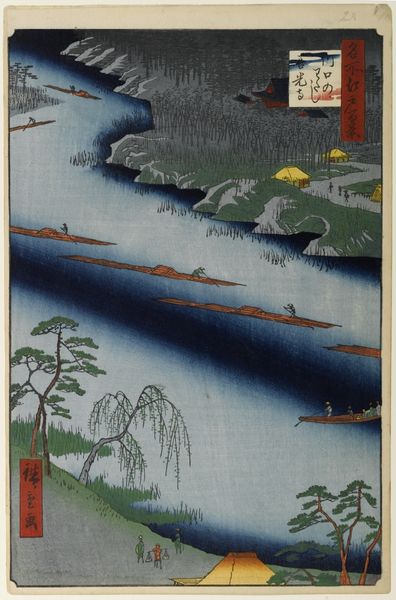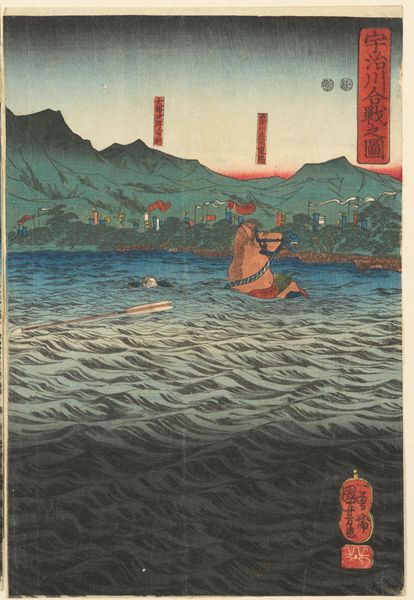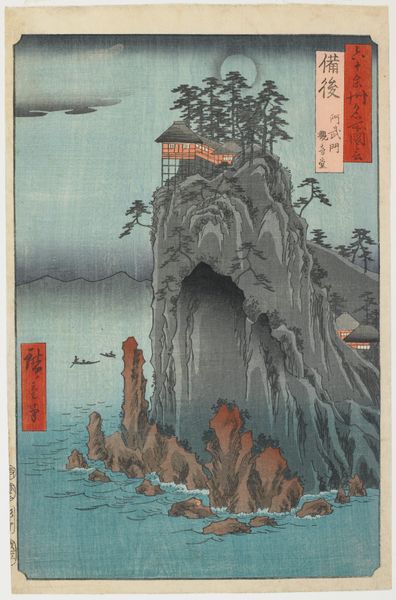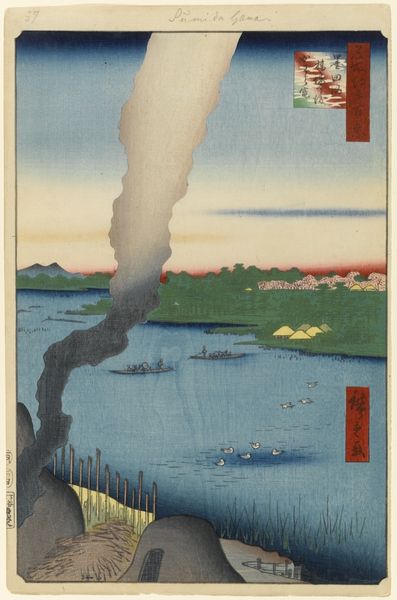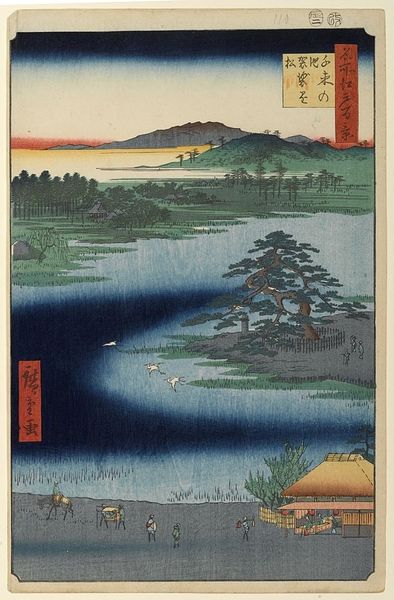
print, ink, woodblock-print
#
water colours
# print
#
asian-art
#
landscape
#
ukiyo-e
#
japan
#
ink
#
woodblock-print
Dimensions: 13 1/8 x 8 11/16 in. (33.4 x 22 cm) (image)14 3/16 × 9 5/16 in. (36 × 23.7 cm) (sheet, vertical ōban)
Copyright: Public Domain
Editor: So, here we have "Fudō Falls", a woodblock print by Utagawa Hiroshige, probably created sometime between 1857 and 1859. It's got this incredible sense of depth and... almost theatricality, wouldn't you say? It looks like a stage set! What stands out to you in this piece? Curator: Oh, absolutely! It’s a landscape imbued with a potent, almost spiritual drama. It feels less like observation and more like an invitation into a space alive with forces unseen, don't you think? I imagine the water not just falling, but speaking in torrents to something ancient within the gorge. Look at the human figures there: what do you make of them? Editor: They seem almost incidental, tiny against the grandeur. Are they just enjoying the view, or is there more to it? Curator: Well, that’s the question, isn't it? To me, their presence acts as a counterpoint—highlighting the sublimity of nature while hinting at the small rituals, the human gestures, made in the face of it. I wonder, are they visitors, worshippers, or pilgrims perhaps? It invites you to conjure a story around this place... Do you find yourself drawn to a particular element of the print? Editor: I’m captivated by the light. It illuminates the waterfall but casts the surrounding rocks in such deep shadow. The artist is really directing my gaze. Curator: Exactly! It’s like a spotlight effect, emphasizing the waterfall as a sacred, powerful entity. Maybe, for Hiroshige, the essence of the place was found not just in what he saw, but what he *felt* when standing there. Do you feel some sense of this place now, too? Editor: Absolutely! The light, shadow and the waterfall's dominant presence create a mesmerizing image that now has me feeling like a traveler who’s stumbled across somewhere quite special! Curator: That's precisely it. Hiroshige transports us. It’s why I feel the deepest art is always a journey, both for the artist and those fortunate enough to experience the journey after.
Comments
minneapolisinstituteofart about 2 years ago
⋮
Located on the outskirts of the Edo (modern Tokyo), Ōji was an easily accessible resort town for city residents. The town had many scenic sites, such as rolling hills and rivers, as well as the wondrous waterscapes of its famous Seven Waterfalls, one of which is depicted here. The third shogun, Yoshimune (1684-1751), purposefully developed this area for tourism by planting cherry trees (for blossom viewing in spring), and maple trees (for picnics in autumn). As a result, Ōji became a popular destination all year around, and there were many restaurants and teahouses to serve tourists. In summer, when people visited the waterfalls to cool themselves, restaurateurs set tables outside, by the water, and served food and drink there. The rope hung before the waterfall is a shimenawa, a sacred rope that divides the human world from the sacred. In this case, it demarcates the sanctuary for the river god.
Join the conversation
Join millions of artists and users on Artera today and experience the ultimate creative platform.
